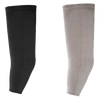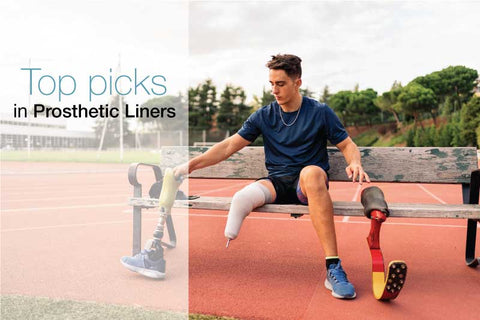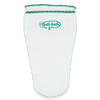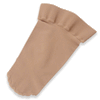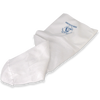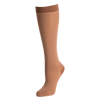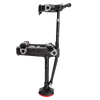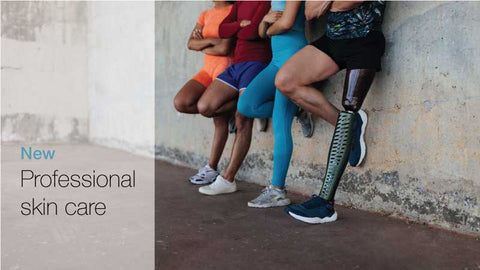Breaking Limits: The Role of Advanced Prosthetics in Sports
Reading Time: 6 minutes
With the development of modern, computer-assisted prosthetic legs, individuals with above-knee amputations, particularly those who lead active lifestyles, could enjoy comfort and freedom. For more than 25 years, prosthetic manufacturer Ottobock has been creating microprocessor-powered knee joints. Their latest innovation, the Genium X4 knee joint, stands out for its ability to adjust to the user’s movements in real-time and its impressive waterproof and corrosion-resistant features.

Björn Eser, who runs The Active Amputee, has been testing the Genium X4 for nearly a year. In an interview with heise online, he shared his experience with the device.
Eser faced bone cancer, which ultimately led to the amputation of his leg above the knee in 2005. Remarkably, he was back to work full-time just three months post-surgery. Five months later, he went on a business trip to South Sudan. Embracing an active lifestyle after his amputation motivated him to create his blog—a valuable resource for individuals with limb loss and those facing mobility challenges.
For water sports
Eser enjoys water activities, so he fully enjoyed the Genium X4’s complete waterproofing and resistance to corrosion, even when exposed to saltwater or chlorine. This feature makes users feel secure while participating in aquatic activities such as swimming, wading, or surfing.
Eser mentioned that he particularly enjoyed using the newest model in the Genium series during one of his favorite activities: canyoning. With the prosthetic’s MyModes, users can conveniently save specific prosthetic settings for walking underwater alongside configurations for golfing and riding, among other activities.

Eser shared that while canyoning, he noticed that walking in water while wearing a wet and heavy wetsuit poses a significant challenge for both the user and the device due to increased resistance. He never considered the possibility of needing a mode specifically for underwater walking because it seemed too niche. But the Genium X4 includes a dedicated setting for just that.
Seamless movement
A signature feature of the Genium line is Ottobock’s OPG (optimized physiological gait) 3.0 technology. This innovation allows users to shift their attention from their prosthetic knee to their activities. Various sensors are built into the prosthetic knee to continuously monitor the prosthesis’ position and movement, assisting users while walking, standing, climbing stairs, and cycling.
Unlike other microprocessor-powered knees that require users to configure movements through an app, the Genium X4 automatically activates many features, such as cycling. Eser explained that until the previous Genium model, switching to cycling mode required using an app. Now, the prosthetic automatically detects when he starts pedaling, which is especially handy in winter since Eser doesn’t need to fish his phone out of his pocket.
Until the previous Genium model, switching to cycling mode required using an app. Now, the prosthetic automatically detects pedaling.
Another useful new feature is “Start to Walk,” which enables users to initiate the first step with the prosthetic leg rather than the sound side leg. Eser noted that while this may seem minor at first glance, being able to step with the prosthetic leg first feels more natural than always beginning with the sound side leg. This Start to Walk function is integrated into the prosthesis’ default settings and doesn’t require separate activation through the app.
Eser added that he typically only uses the app for specific sports where the basic knee settings aren’t applicable and the prosthetic needs to adapt to different demands.
More energy conserved
The Genium X4 is designed to facilitate natural walking, even on inclines. Eser shared that he spends a lot of time on his feet, often walking between 10 to 15 kilometers daily. He has noticed that he has significantly more energy by the end of the day than when he used earlier models.
With the Genium X4, Eser noticed he had significantly more energy by the end of the day than when he used earlier models.
The features of the Genium X4 can be managed through an app. A prosthetist initially configures certain settings based on individual factors like foot size, weight, and activity level. During use, these settings are finely tuned to meet specific needs, such as the amount of resistance required when descending or the level of support needed when sitting down.
According to Eser, he uses the app to make precise adjustments, particularly when climbing ladders. He explained that when he’s on a ladder, leaning in different directions can change how his foot is loaded. In this situation, he wants to ensure that the knee doesn’t give way unexpectedly; it should only bend slightly before locking in place. It would be disastrous if he were six meters up and suddenly lost support because the prosthetic leg thought it was in a walking phase. Eser can adjust these settings through the app.
And once he’s done with the ladder work, he simply lifts the restriction and reverts to his normal settings. Eser finds this function very convenient.
Battery life
For Eser, a single charge of the Genium X4 typically lasts around five days, though he notes it may last even longer for those who are less active.
He recounted hiking the Eifel trails in western Germany for four days, carrying luggage and covering over 20 kilometers each day. He didn’t bring a charger for the Genium X4, yet the battery held up well. In contrast, with his first prosthetic, he needed to recharge it every other night.
This latest development in battery life represents a significant leap forward for Eser as it provides users with greater independence.
Adjustment phase
When asked how long it took him to adjust to the Genium X4, Eser said it might take a bit of time to adapt to certain features, such as alternating steps while navigating stairs, especially for those transitioning from a basic prosthetic leg. However, he indicated that for individuals switching from the C-Leg to the Genium X4, the transition is relatively straightforward.
The Genium X4 is Eser’s fourth microprocessor-controlled knee joint over the two decades since his amputation. He began with the C-Leg, which allowed him to be active, mobile, and self-sufficient in his everyday life. Six years later, he transitioned to the original Genium knee.
Bottom line
The Genium X4 knee joint shows how advanced prosthetics are transforming the lives of individuals with limb loss, allowing them to engage in more activities, even water sports. With features like real-time motion adaptation, Start to Walk, and automatic cycling mode detection, the Genium X4 not only improves the user experience but, most importantly, also promotes a greater sense of independence and confidence.
As more individuals like Eser share their stories of active living post-amputation, it becomes increasingly clear that modern prosthetic technology is not just about mobility; it’s about breaking limits and enabling a fulfilling lifestyle.
For more information about the Genium X4, please visit Ottobock.

